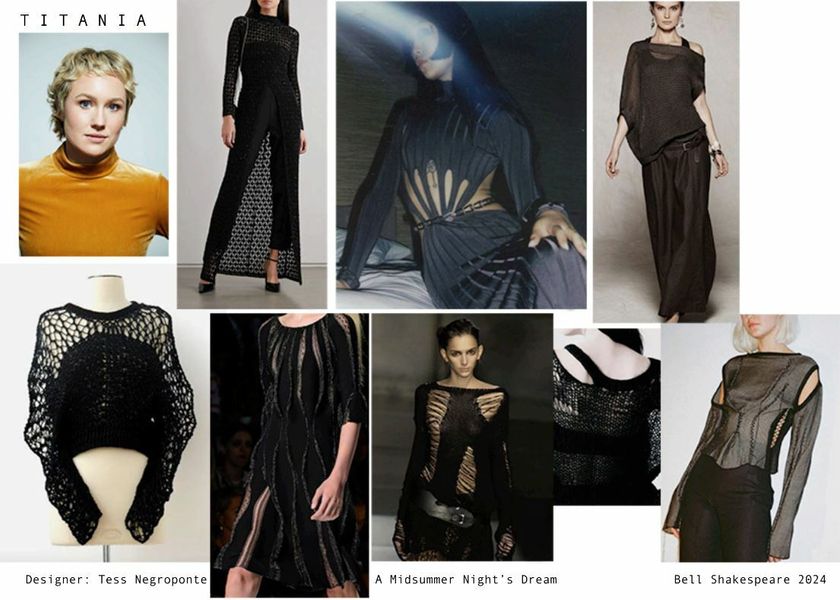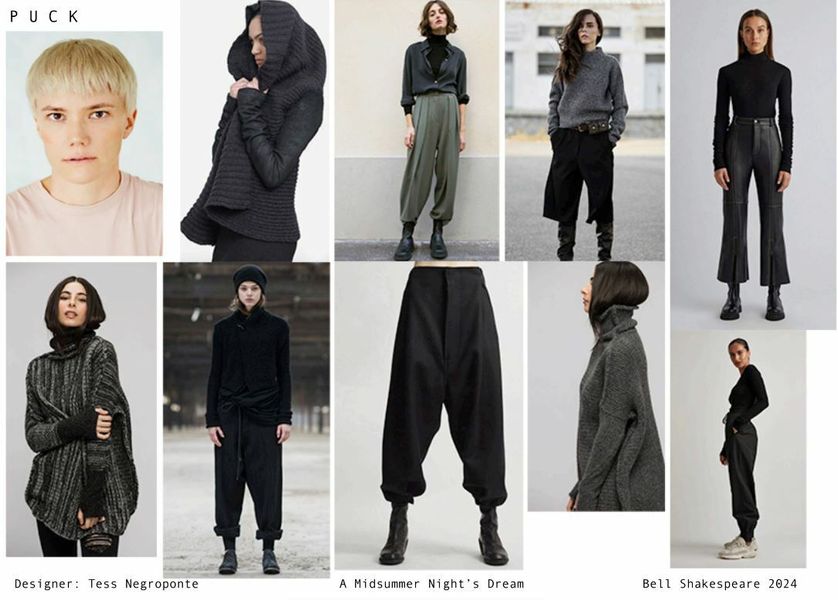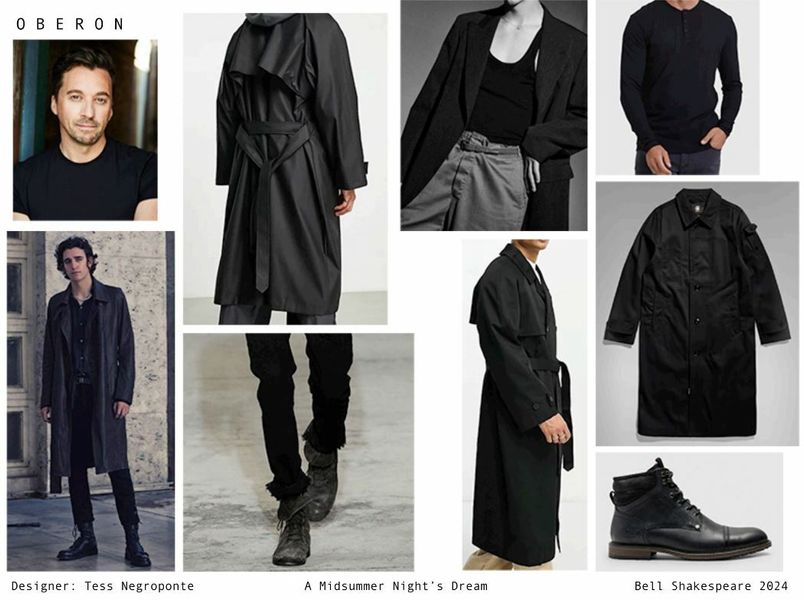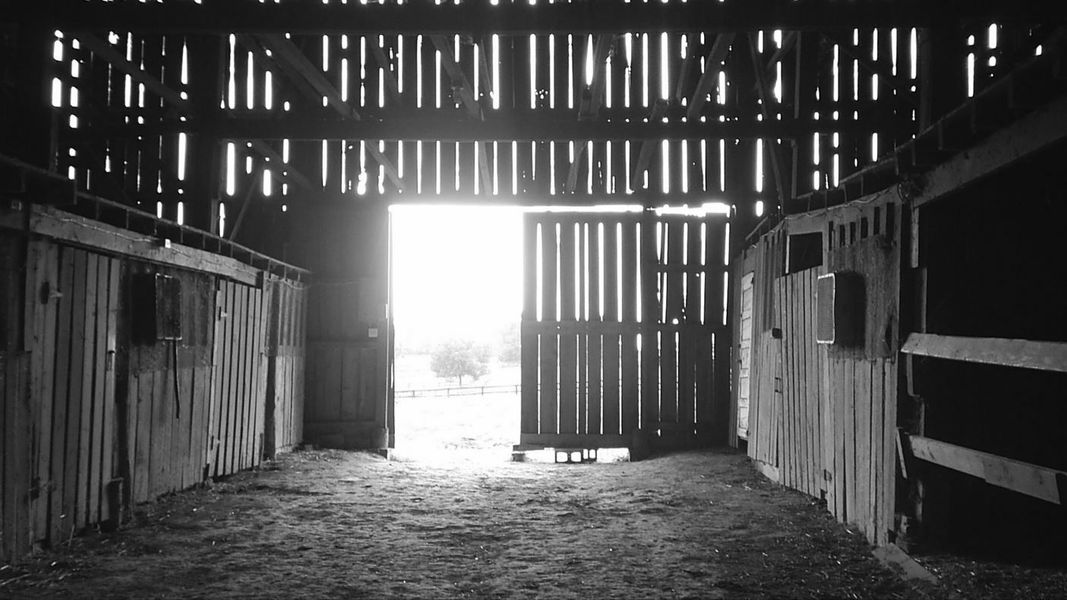
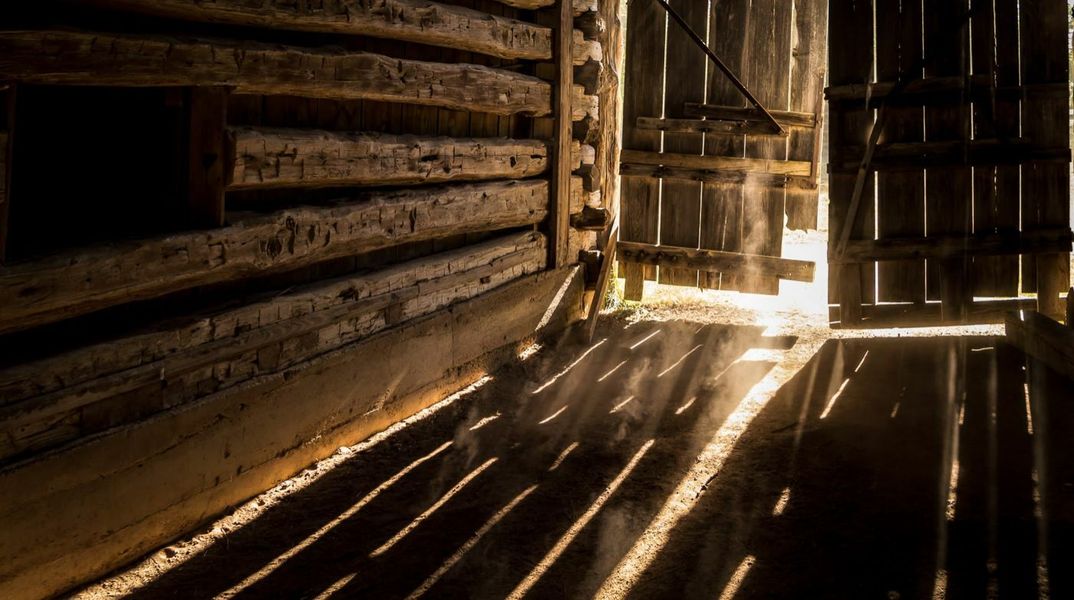
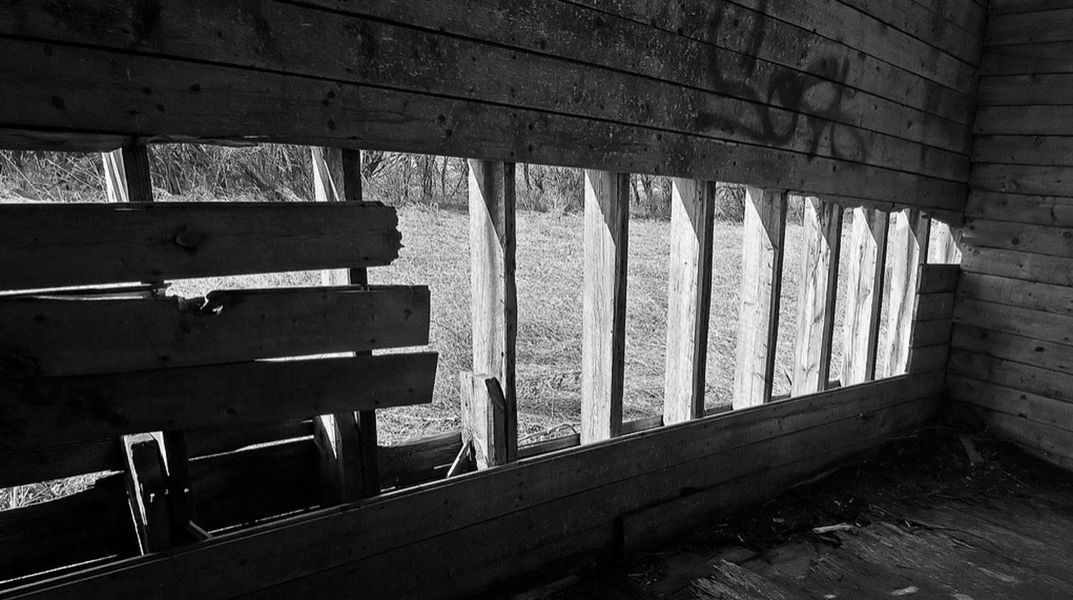
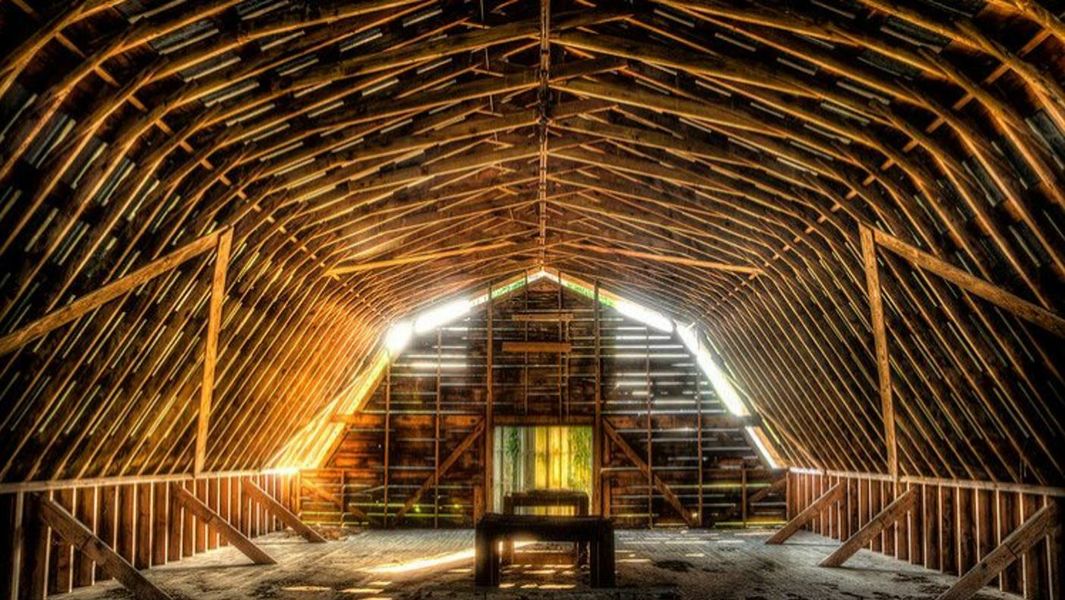
A Midsummer Night's Dream
Take a look at Director Peter Evans’ directorial vision, and Teresa Negroponte's set and costume designs, for the 2024 national touring production of A Midsummer Night's Dream.
Director Peter Evans and Designer Teresa Negroponte have worked closely to realise the production concept for A Midsummer Night's Dream. Here are some insights into the design process and realisation.
A Transformational Space
Early in the design brainstorming process, Evans and Negroponte were inspired by photography of abandoned theatre spaces, including those documented in Detroit USA. Once grand structures that were now destroyed, dilapidated, and in some cases, turned into car parks. These spaces held a latent potential and innate drama and theatricality.
Research then turned to other abandoned spaces such as old barns, and Evans and Negroponte were particularly interested in the way light filtered through these wooden structures. They were excited by these spaces as they could be quite multifaceted – is it an abandoned barn, or an old country house near a wood, or perhaps an old broken-down stage space ready for rehearsal?
After many design options, they decided on creating a base set design that takes inspiration from wooden structures and forms an abstract, yet familiar, space. Modelled on an abandoned, dilapidated barn, the structure provides a set that can be both interior and exterior to suit the forest and court scenes. It is rich with texture and both seasonless and timeless.




The wooden structure has been designed to be climbed on and interacted with physically by performers. It can be climbed up, over and through, allowing it to be used by all characters in interesting ways. Portholes have been built in so that cast can climb through and disappear through the structure swiftly. In this way, Negroponte says the structure is evocative of a playground.
Wooden tables are used in multiple ways and configurations to suit the different settings. They can be set up in a formal line as the court, upturned to for the chaos of the forest, and sigfnify Peter Quince's rehearsals.
Of course, A Midsummer Night’s Dream charts the course of three intersecting worlds – the Lovers, the Mechanicals, and the Fairies – so the production design must take into account these three worlds and the way they intersect. Lighting design (Benjamin Cisterne) can also transform the space and shift the mood and tone of the play, as the plot shifts from comedy to romance to drama to the mysterious world of the fairies. Sound Design from Max Lyandvert will also transform the mood and tone of the play, whether in subtle underscoring of scenes, or in more defined moments.

With eight actors covering a number of roles, Designer Teresa Negroponte’s costume design focuses on layering and mixed materials for quick changes. The actors will swing quickly between roles with simple yet clear changes such as a change of a coat, scarf, hat, a robe.
This production commences with the Mechanicals scene, rather than the court room scene as in Shakespeare’s original text. This firmly shifts the focus of the production to the overarching notion that we are witnessing actors performing a play for us. With a cast of eight actors, most of the cast are required to double and sometimes play three different roles. Evans and Negroponte decided to turn this necessity of quick costume and role changes into a design feature. There will be visible costume racks on stage and the actors will not leave the playing space for the duration of the play. This means as an audience we will see actors transform into different roles, and this process is not a hidden one. The play A Midsummer Night’s Dream, as Evans notes, is in many ways a celebration of theatremaking and acting, even if at time Shakespeare gently and lovingly mocks his own artform and artists!
To distinguish the three worlds, Evans and Negroponte took evidence from the play, and made each one contemporary.
The Mechanicals
The Mechanicals’ social stature is at a lower level than the young lovers and the courtly world of Athens, and they represent the lower, working classes of the city. The Mechanicals' costumes are layered and feature warm, earthy tones. As Puck refers to “these hempen homespuns”, the costumes for the Mechanicals gently leans into this patronisation with affection. Their clothes look like real, lived-in, worked-in clothes. They are warm, practical, and each character’s costume references their profession or relevant trade – a tinker, a tailor, a joiner, a weaver, a bellows mender. Each costume will have handmade and unique elements, and the Mechanicals colour palette is earthy, warm, eclectic and jovial. Natural fibres such as wool and leather feature in their costumes.
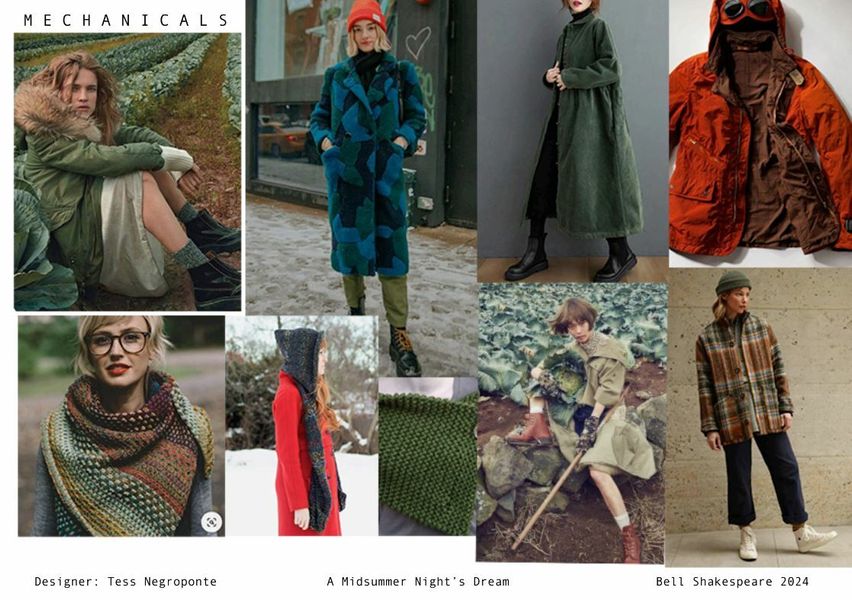
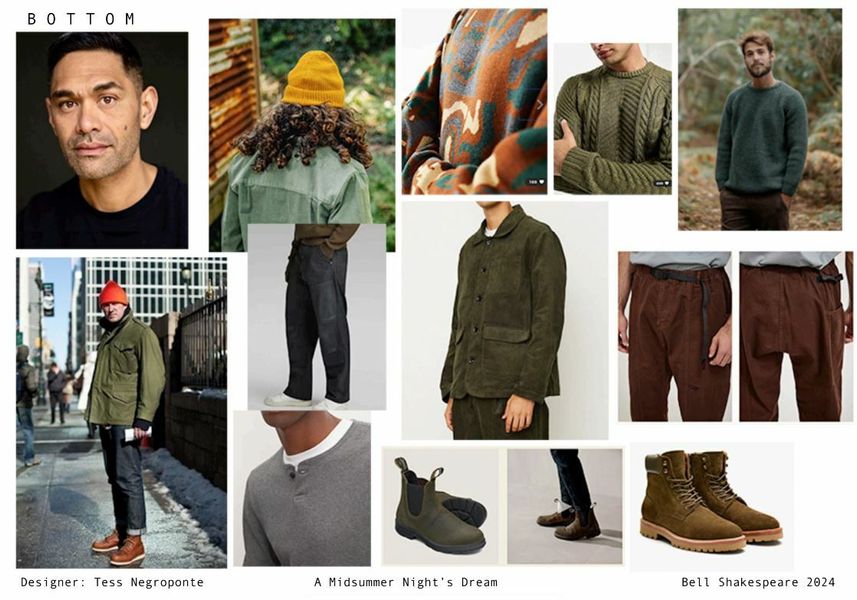

The Lovers
The young Lovers – Helena, Hermia, Lysander and Demetrius – hail from Athens and are from a privileged world. Their costumes will reflect their higher social stature and wealth accordingly. Their outfits will be put-together and carefully, fashionably, considered. Their colour palette will be of luxe, rich jewel tones – purples, ruby, emerald, sapphire, warm honey gold. The Lovers’ fabrics are rich too – velvet, corduroy, silk, cashmere, mohair.
As the Lovers travel to the forest, we will note a subtle shift in their garments. They will begin in the Athenian world heavily clothed and layered, with great warmth. As they journey into the forest we will see them shed layers as we see their characters feeling more exposed, vulnerable, colder, and far away from home.
In regards to the adult figures in the world of the Athenian court, we will see Theseus and Hippolyta clothed in regal garments that give a nod to Tudor and Elizabethan court attire. Importantly, as the play makes note of the royals’ outdated ways of thinking, their costumes will signify older world style as juxtaposed by the teenagers’ more cutting-edge fashion.
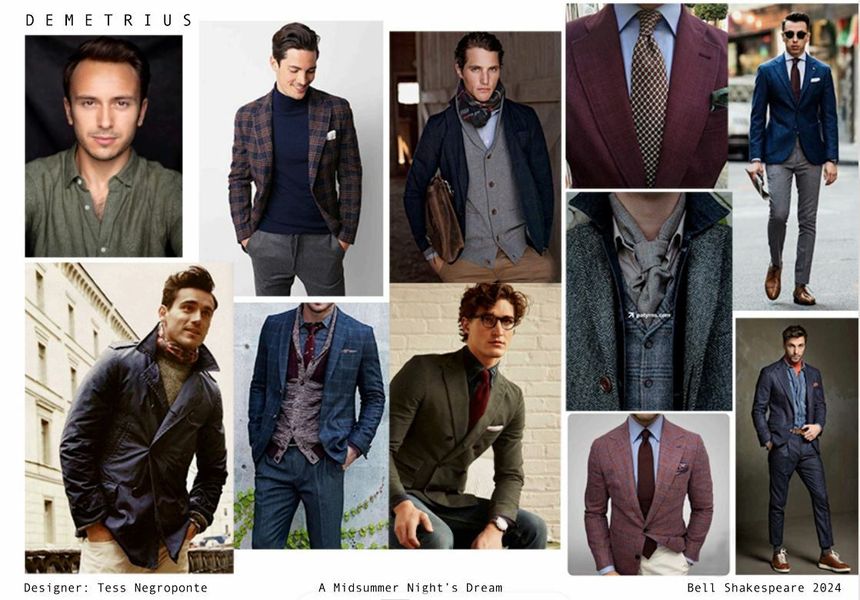
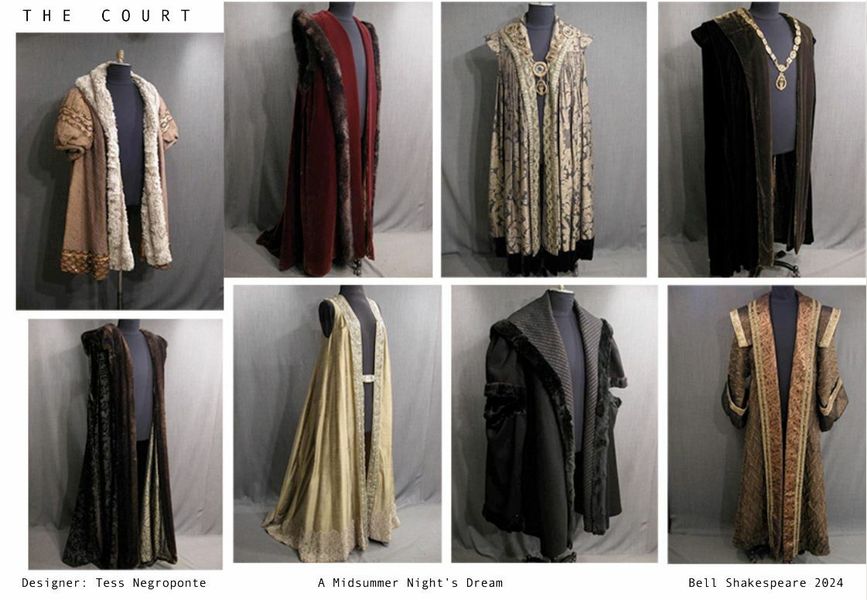



The Fairies
For the immortal world of the fairies, Evans and Negroponte lean into their descriptor of “shadows.” The fairy world is unpredictable, unfamiliar, mysterious, and darkly enchanting. Rather than treating them as mischievous sprites, we see them as truly powerful, mythical beings.
The Fairies’ costume design is distinctly different to the mortal characters. These immortal characters need to be able to blend into their surroundings quickly and with ease, and so their costumes echo elements of the set. Their colour palette is dark – a mix of blacks, indigo, deep browns, olive and charcoal. We will see longline coats that can evoke fairy wings and capture dramatic silhouettes. The fairies' costumes will include a mix of textures, including rough and smooth textures – matte and shiny – so that they can catch the light and shimmer subtly. Queen Titania's costume features lace to denote her regality. Costume fabrics have been selected for their movement qualities – when a fairy character disappears through a porthole in the set design structure, we will see the material of their costume glide swiftly behind them.

